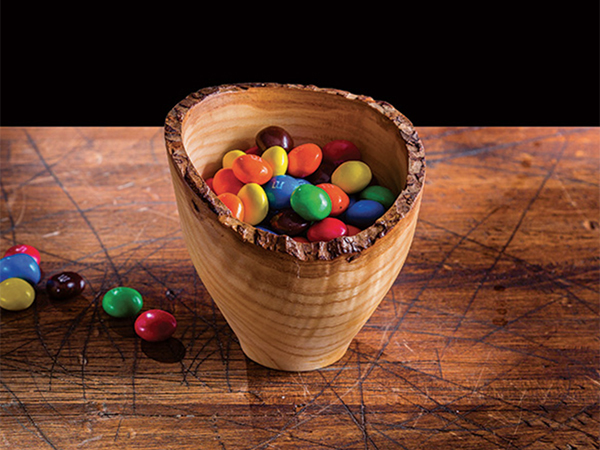
I want to scroll cut thin slabs of tree trunks, keeping the bark intact. Is there a chemical or process that will shrink the bark permanently to the slab? – Louis Goaziou
Tim Inman: If you have the option, select the wood for the purpose. Some trees hold their bark tight even after dying; others drop their bark freely upon death. Bark is “Mother Nature’s Plastic Bag.” It is a membrane designed in most cases to hold moisture inside and not let it out willingly. Thus, you might expect a damp layer under the bark between it and the wood. This makes bonding the bark very difficult. Once the wood is completely dry, the bark is often very prone to falling off — sometimes in slabs, other times it just crumbles. So, to answer your question better, there is no chemical I know of that will prevent the bark from relaxing and letting go if that is what the wood is predestined to do. Remember, as the wood dries, it shrinks. The bark may not shrink the same. This will further cause the bark to pull away. Though I have not tried this myself, you might investigate the benefits of soaking the joining surfaces with an epoxy adhesive. Polyester resins might work, too.
Chris Marshall: In an article about turning natural edge bowls, our woodturning expert Ernie Conover recommended harvesting the tree or limb in the colder winter months of December through February, in order to have the best odds of the bark remaining on the turning blank.
“You can somewhat combat the ‘bark falling off’ tendency by treating it with thin cyanoacrylate ‘super’ glue as you turn to increase the bark’s bond to the piece,” Conover says. “The cyanoacrylate becomes indispensible for beginning and experienced turners alike if you attempt to turn a natural edge piece from wood harvested in the warmer months.”
You can read the full article by clicking here.





